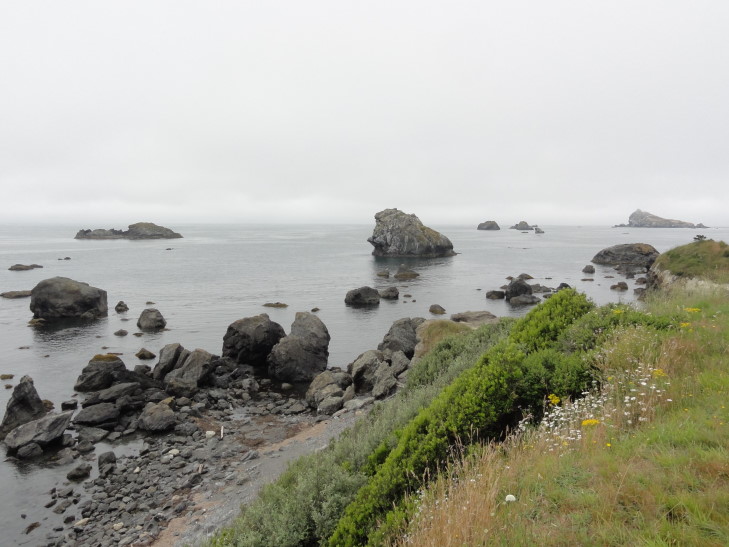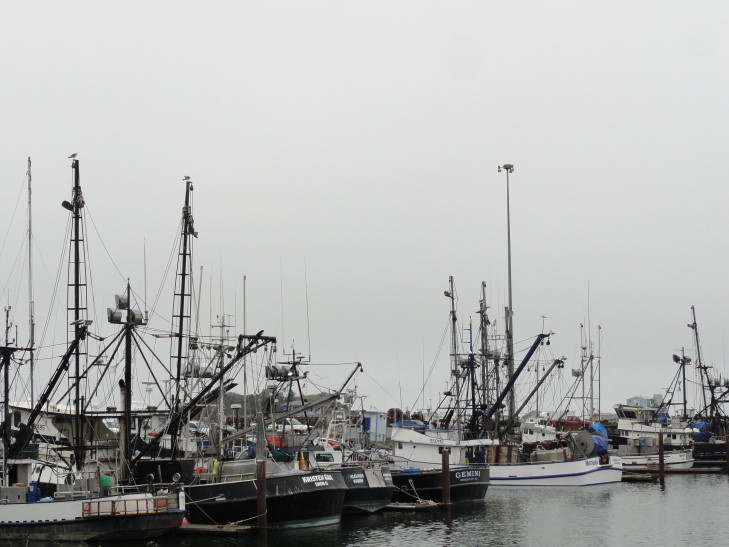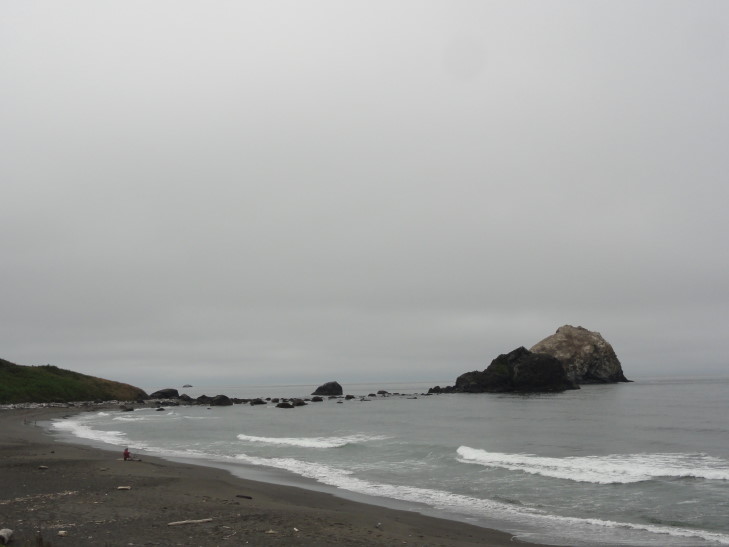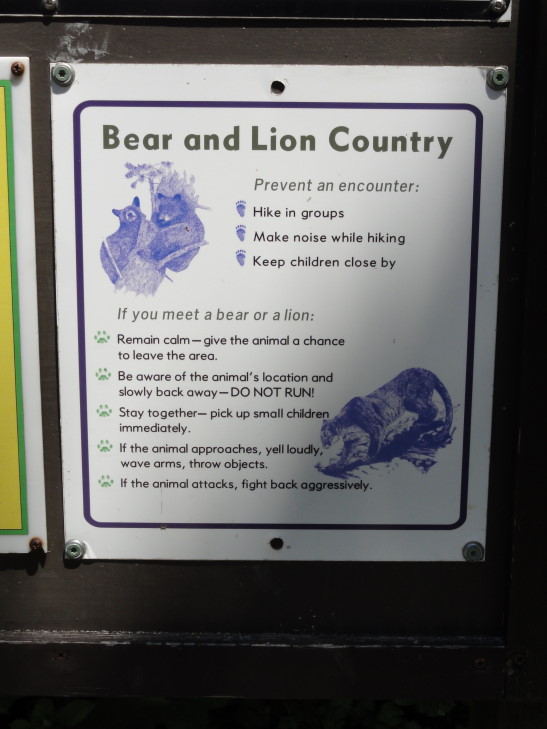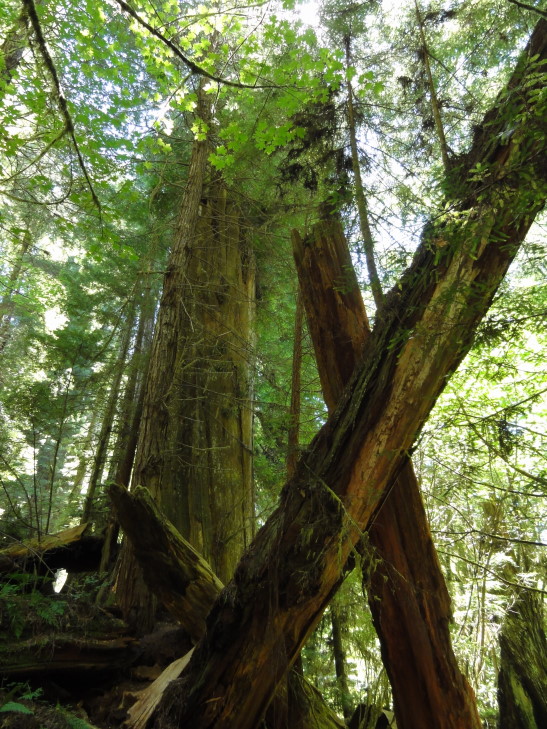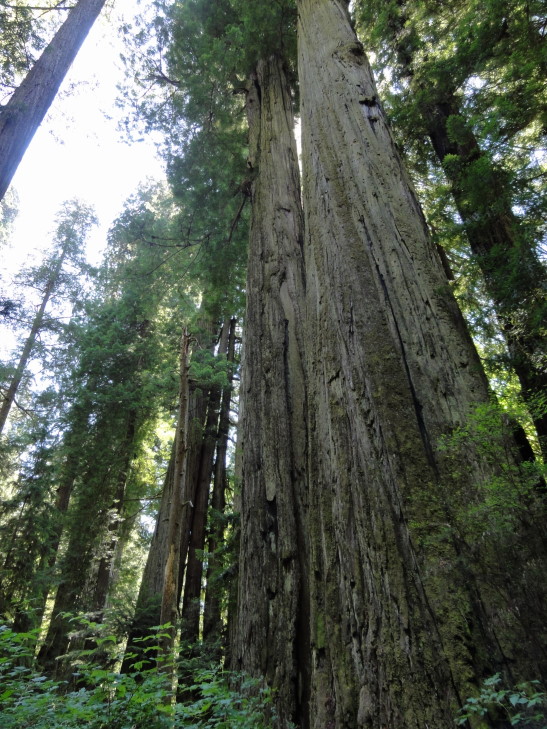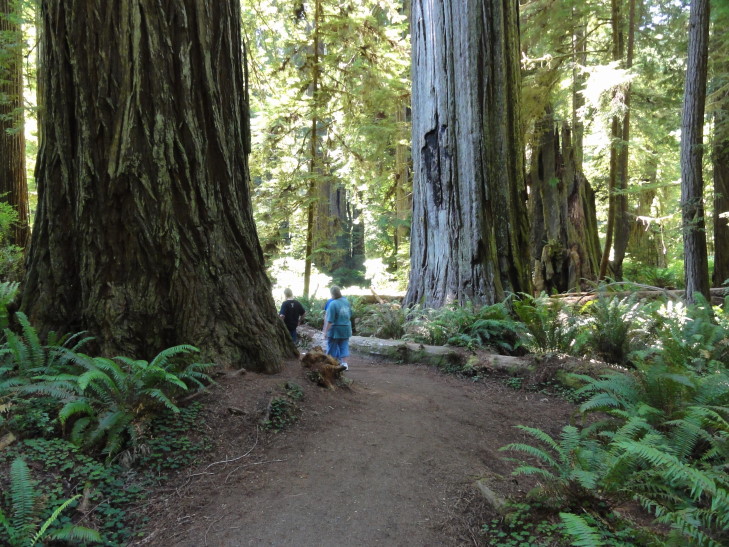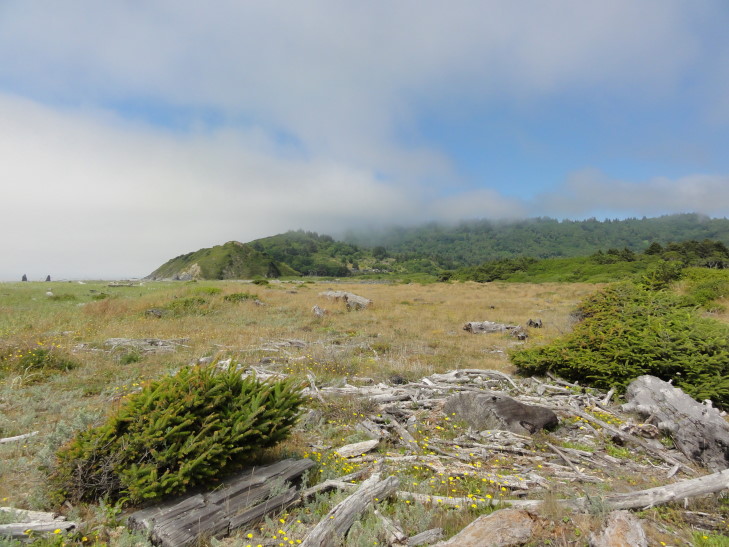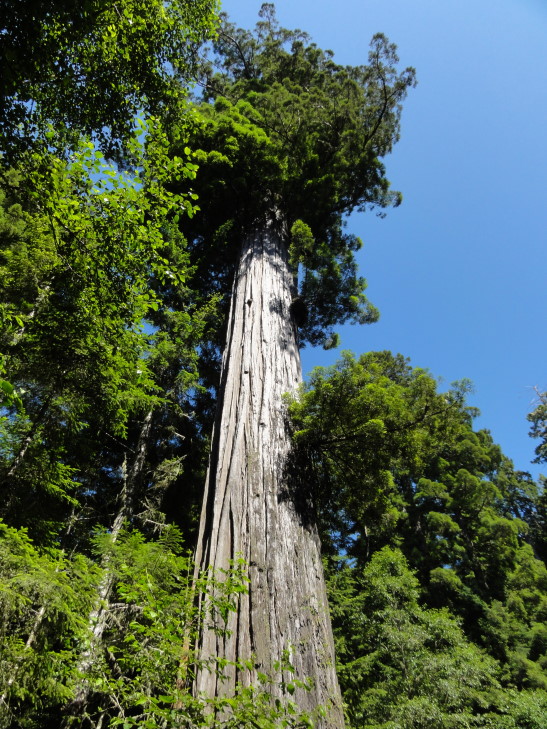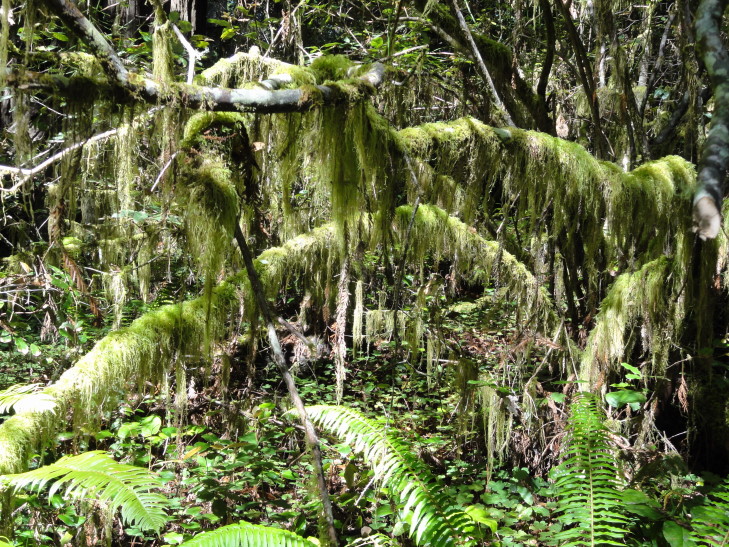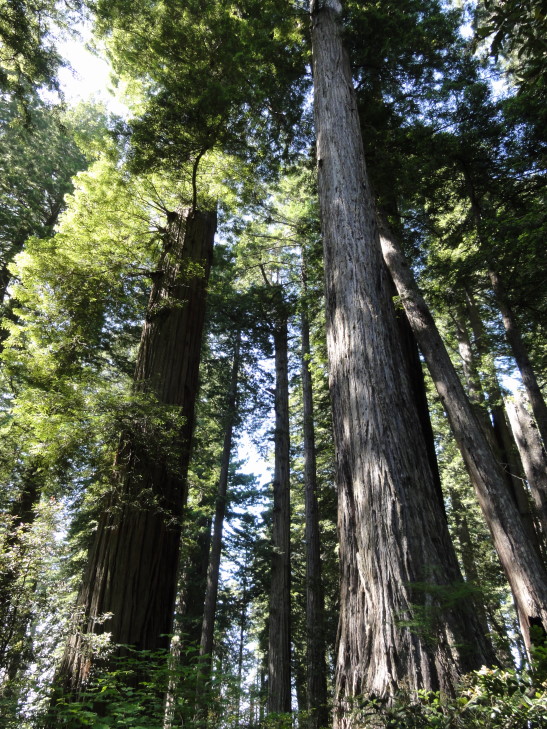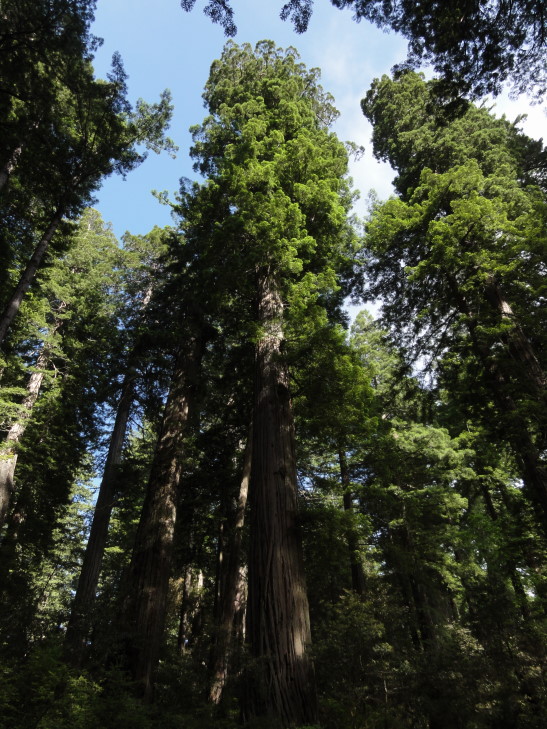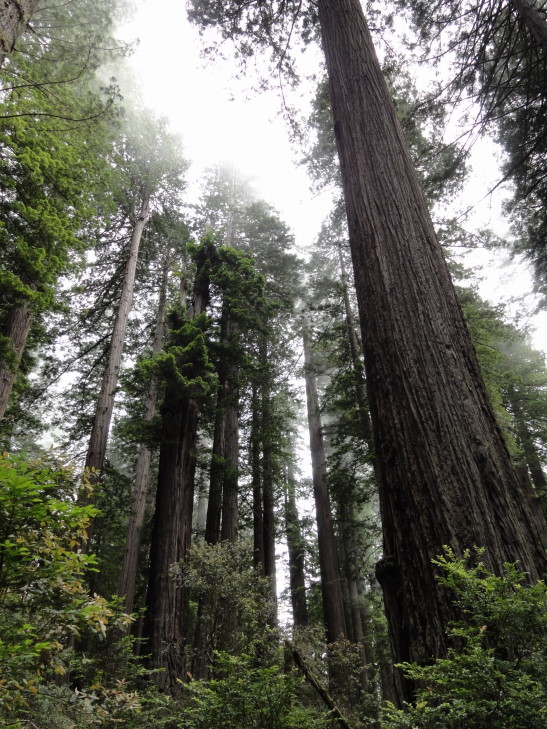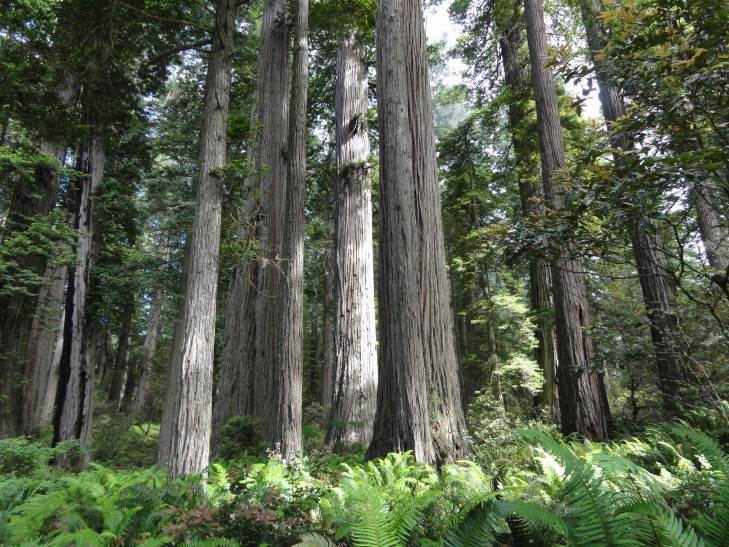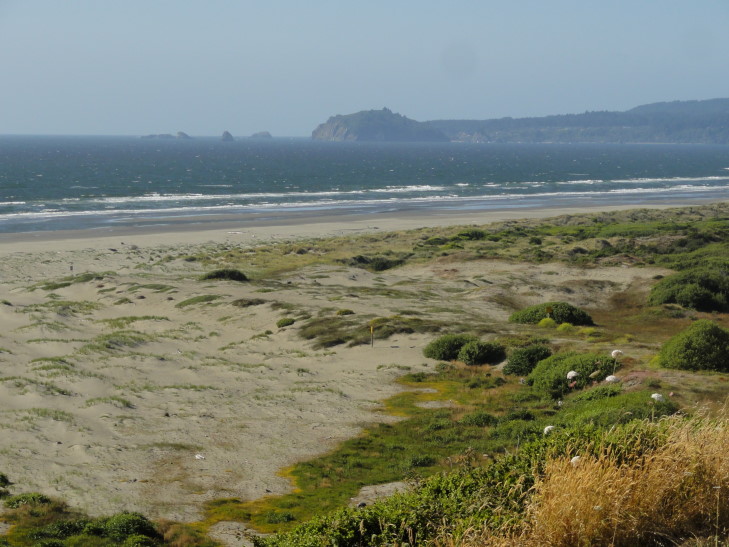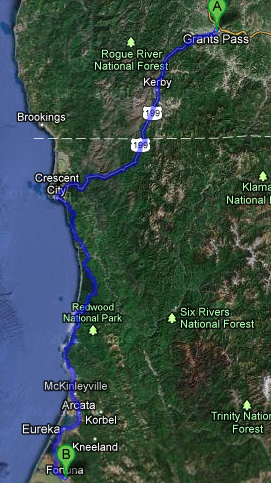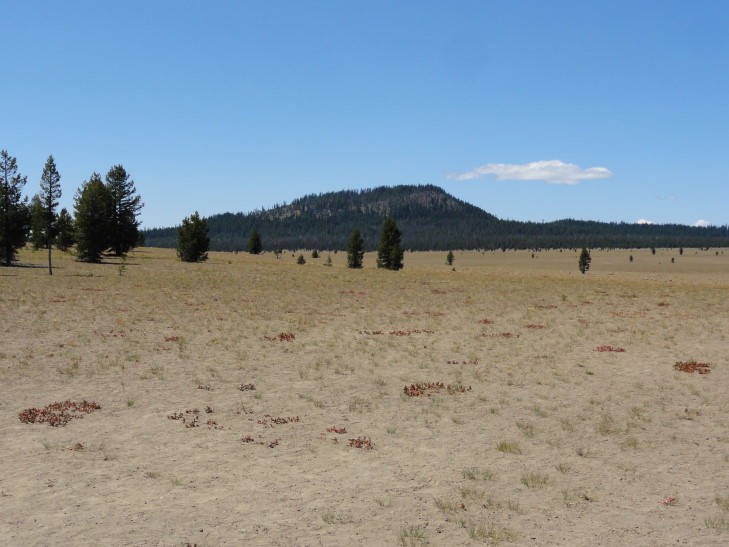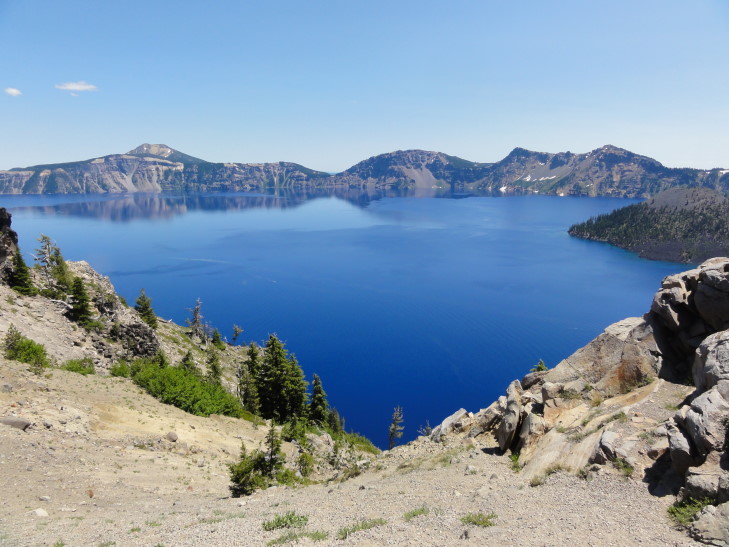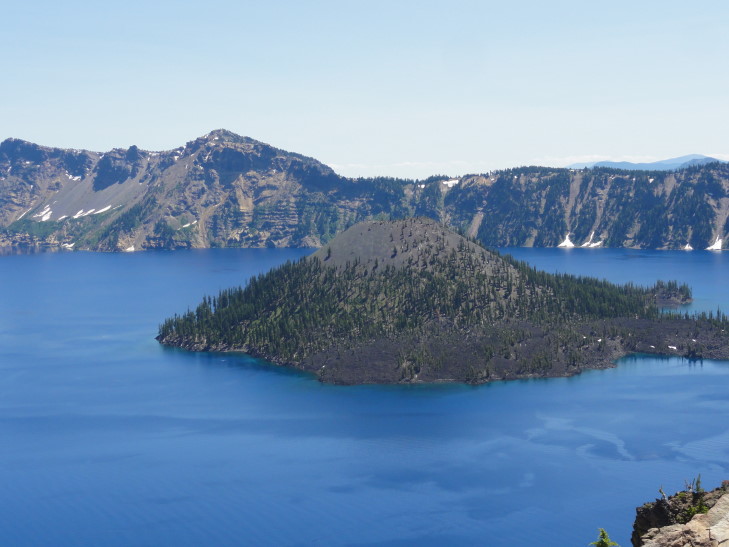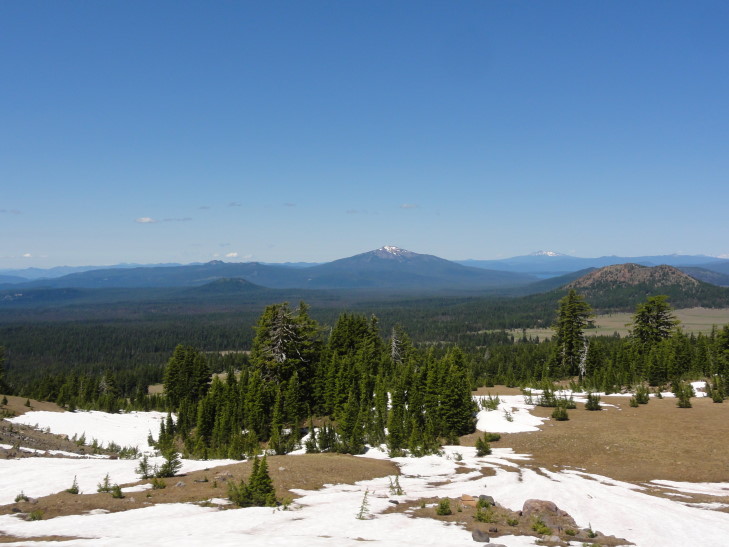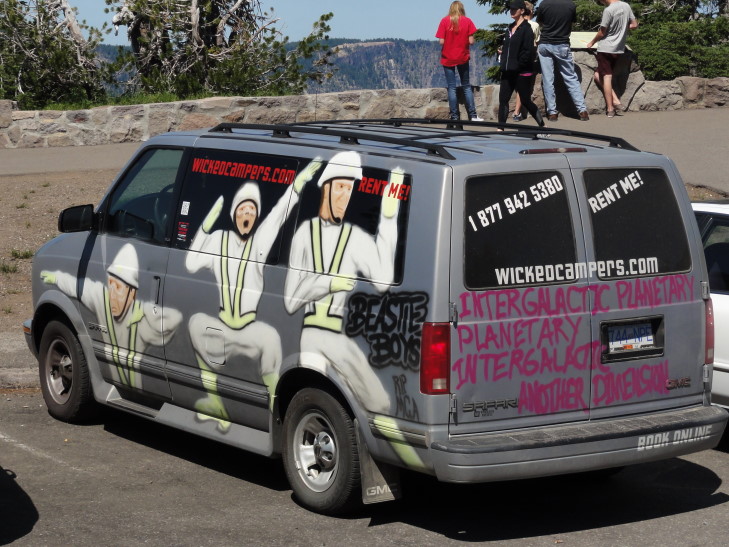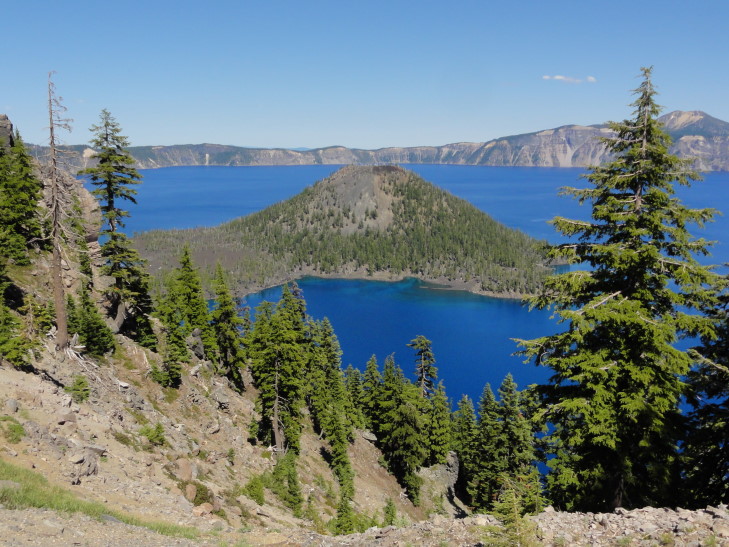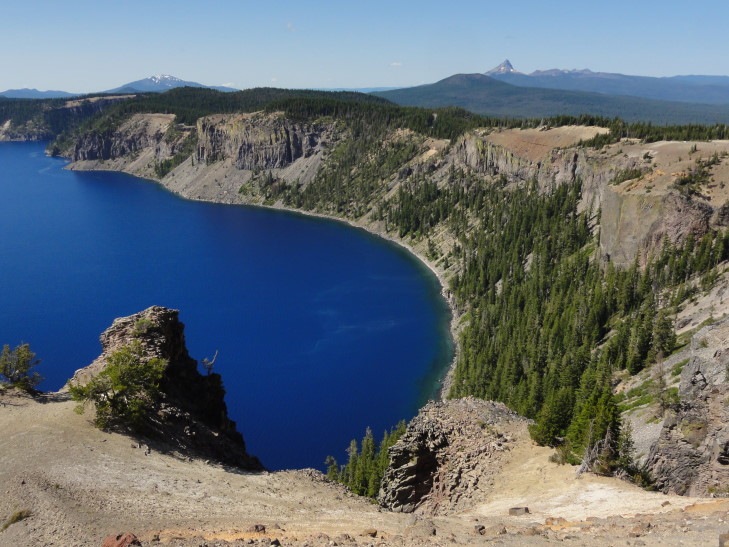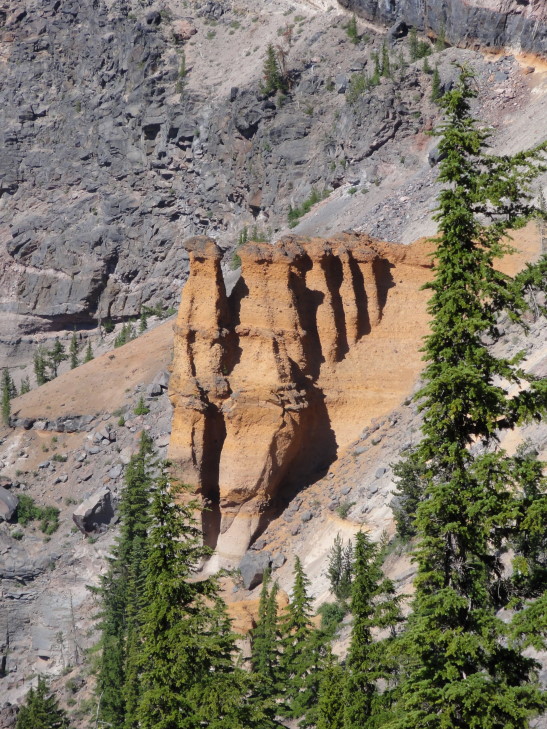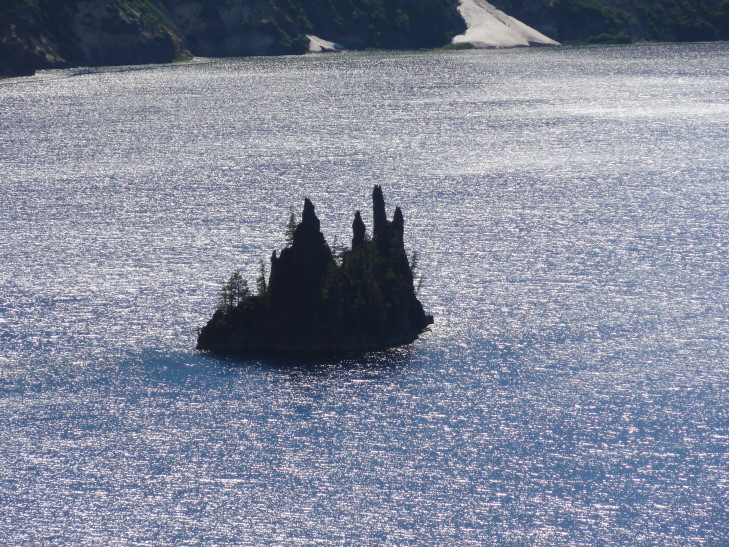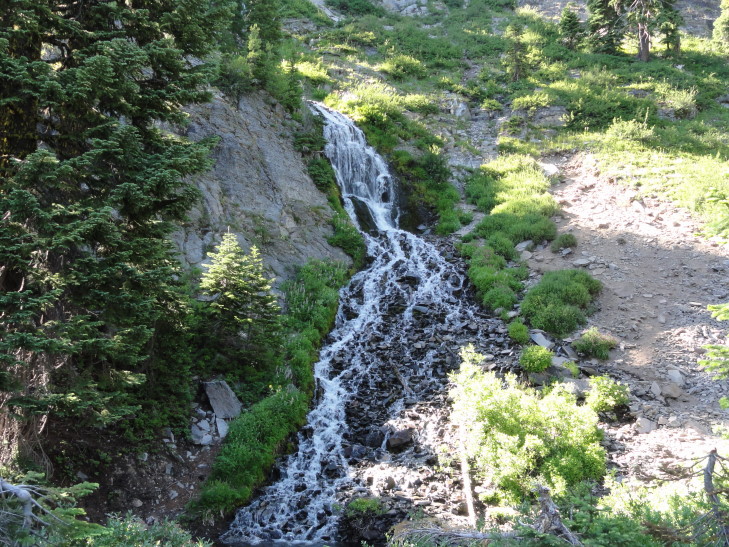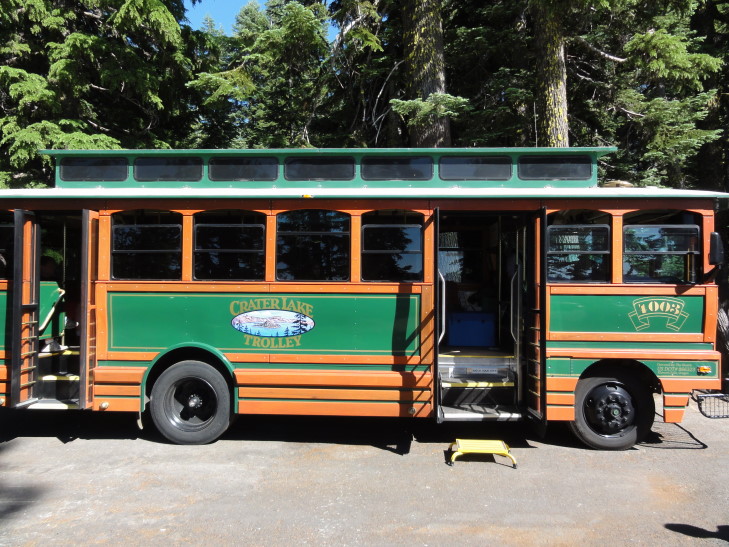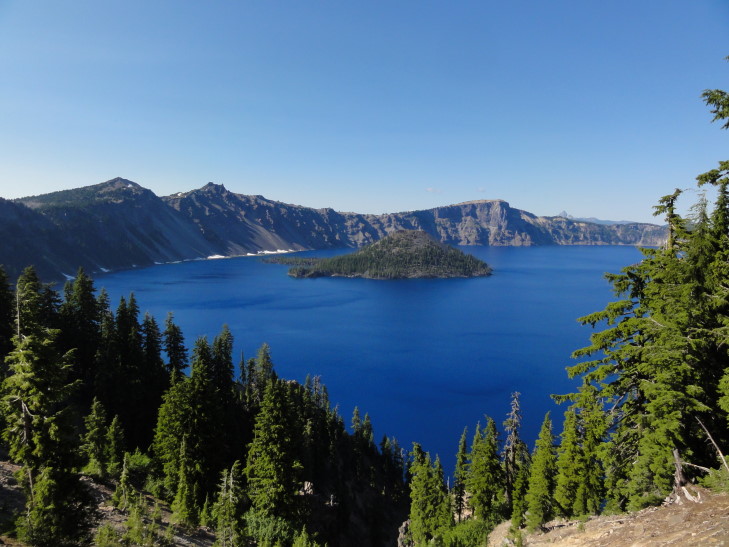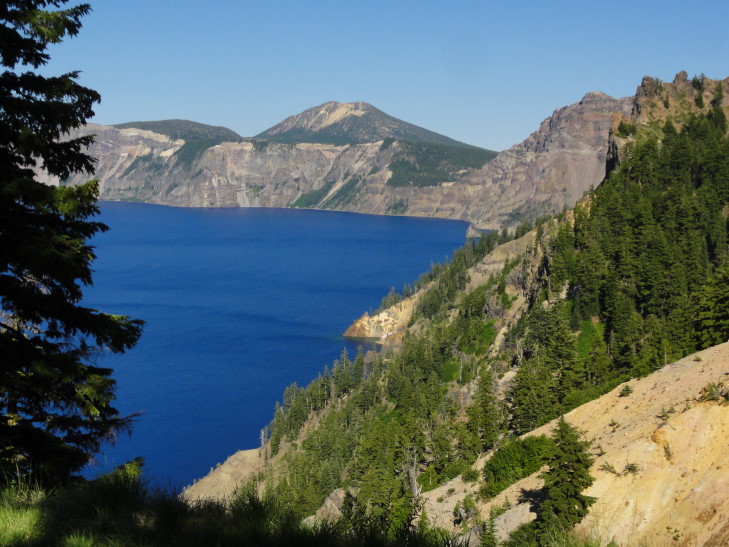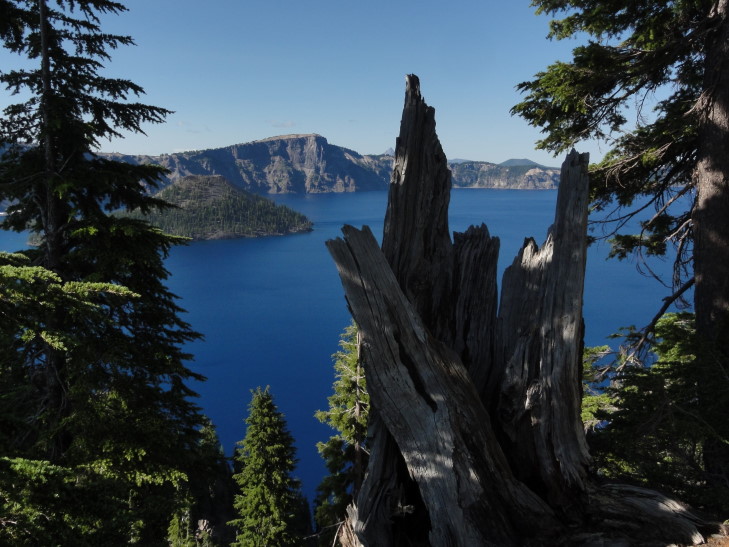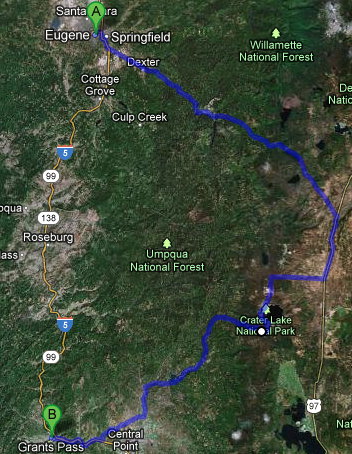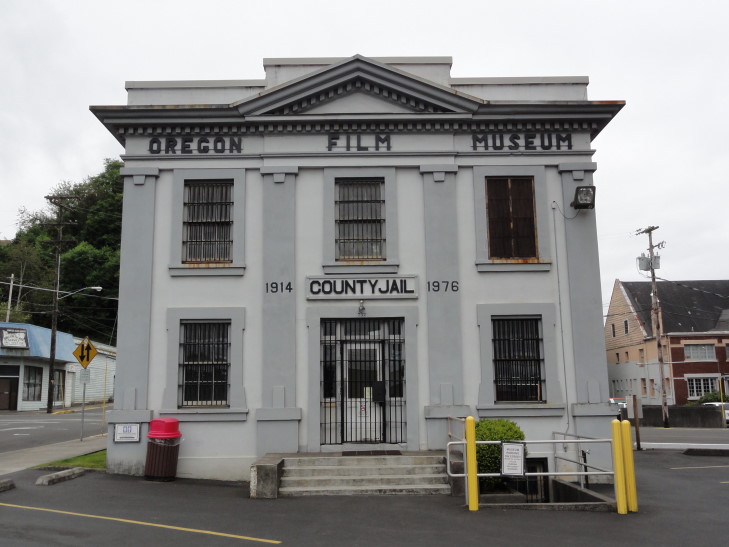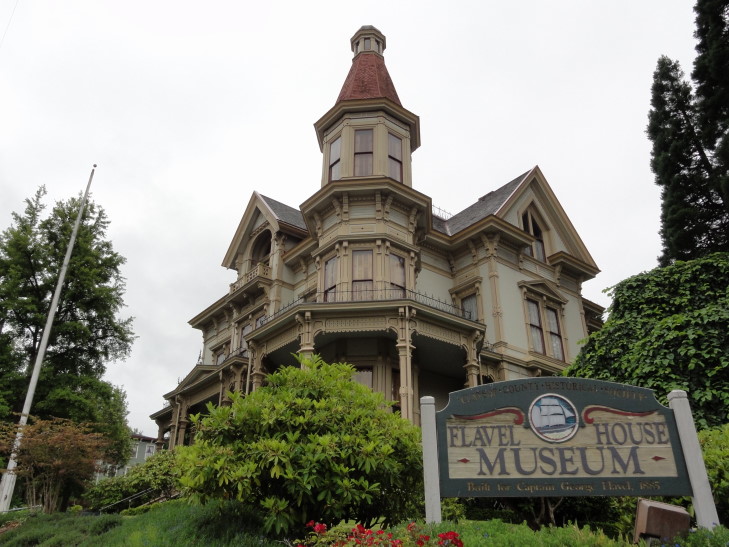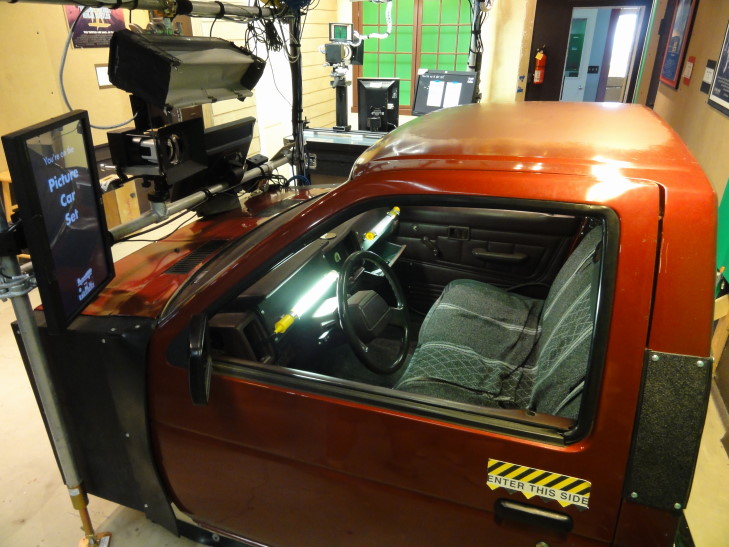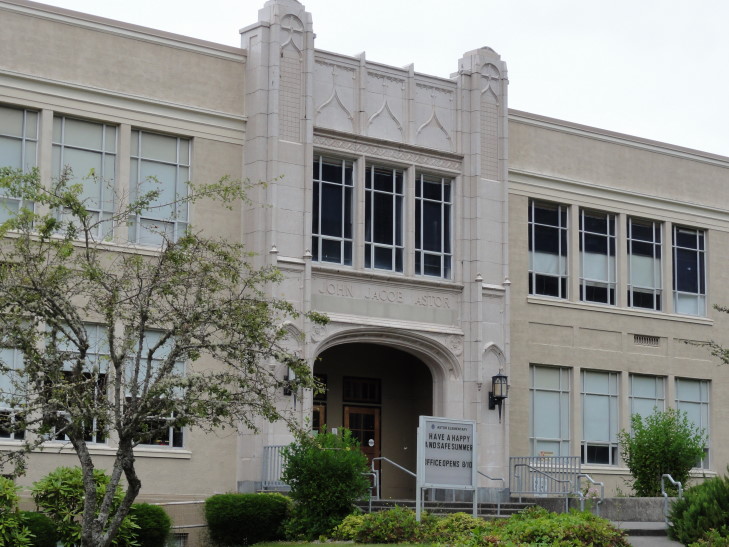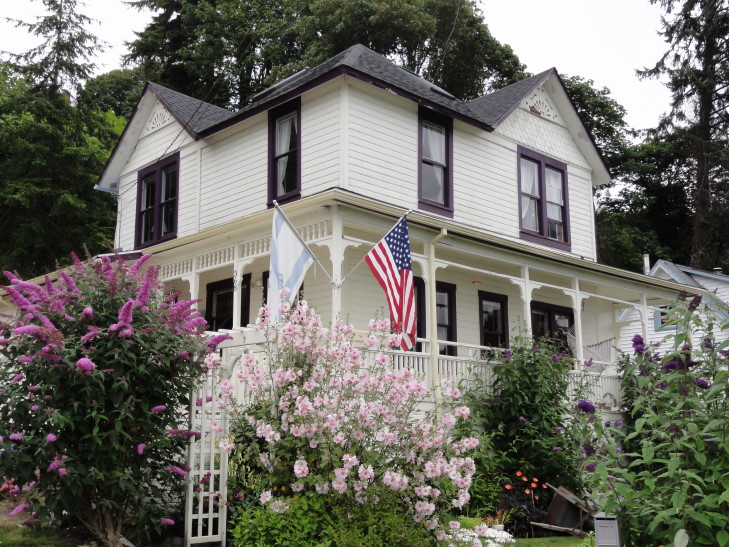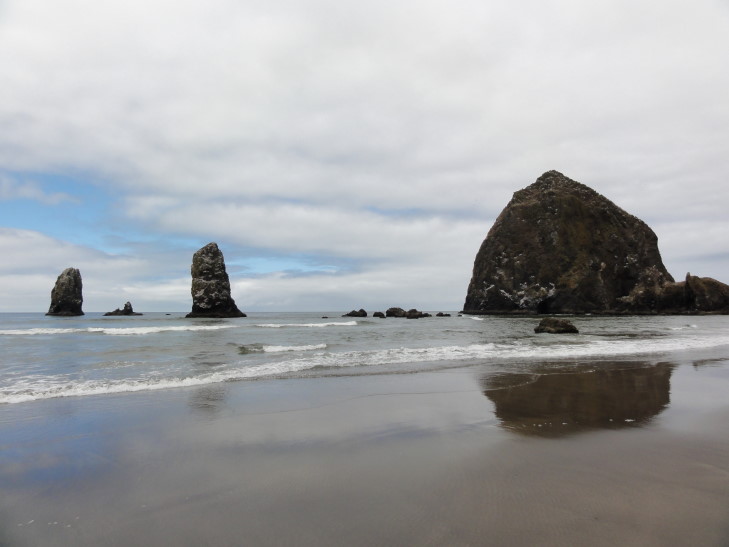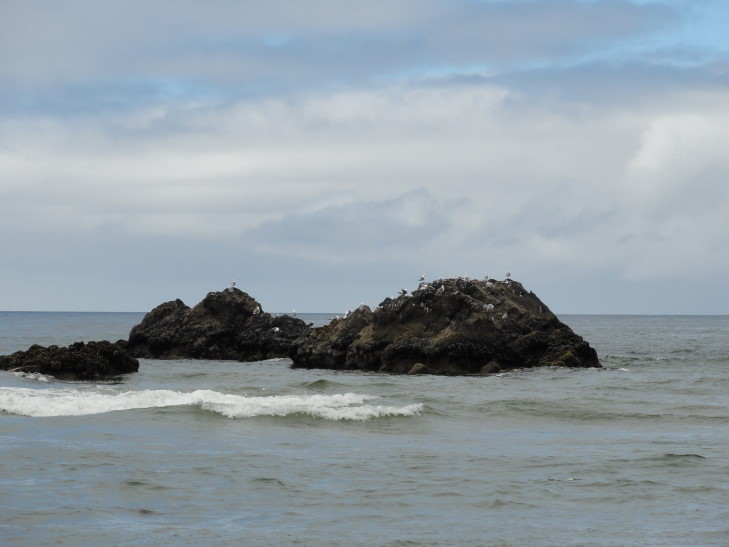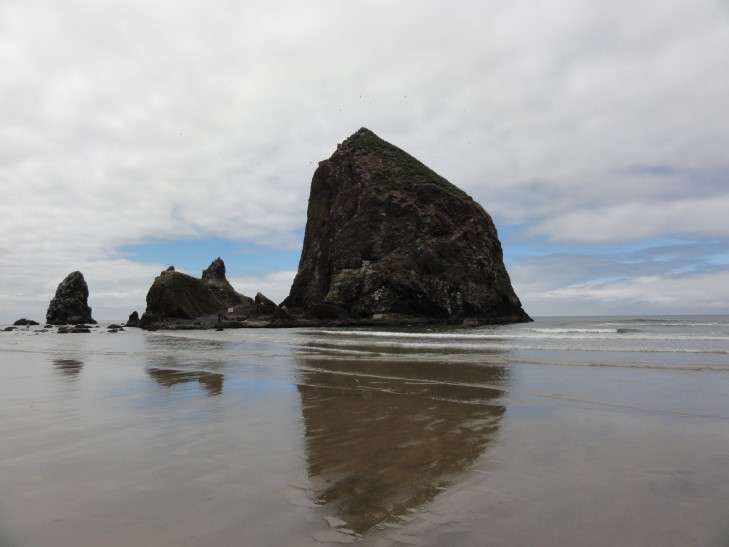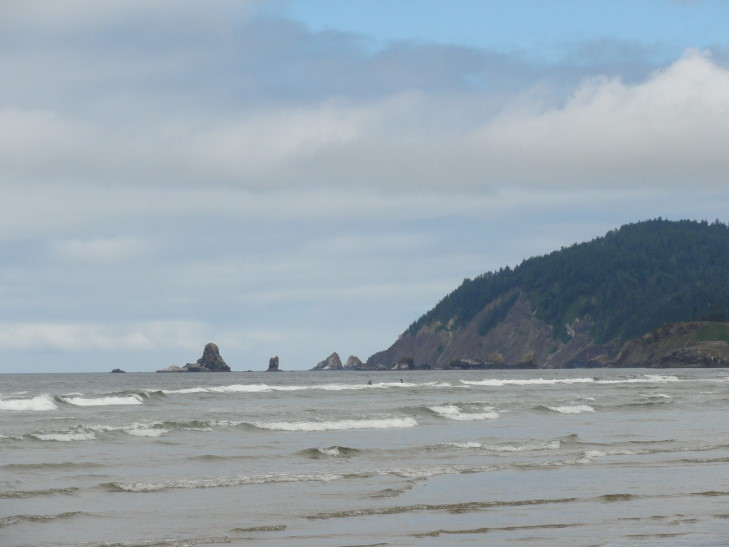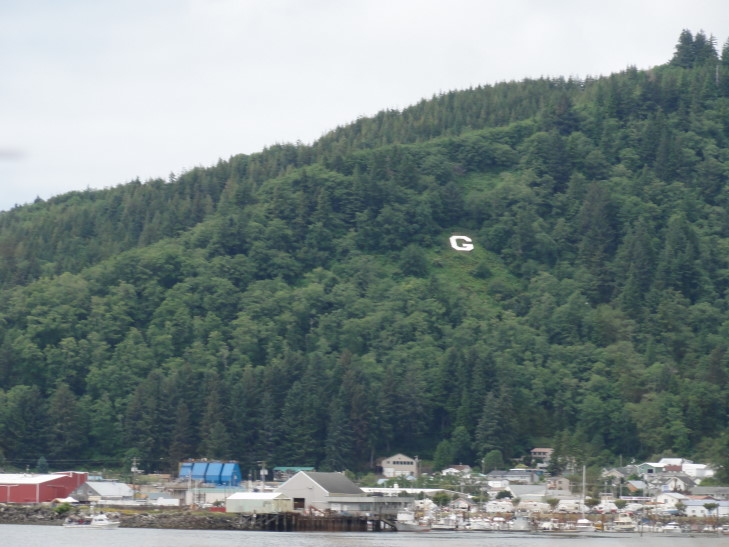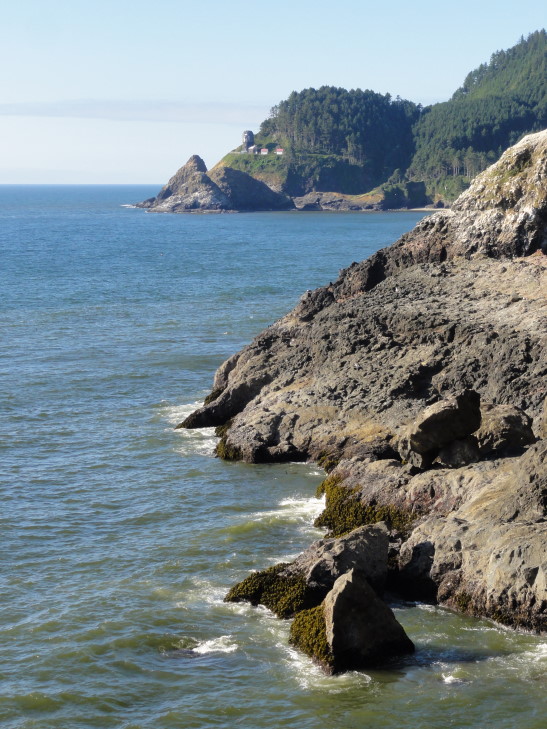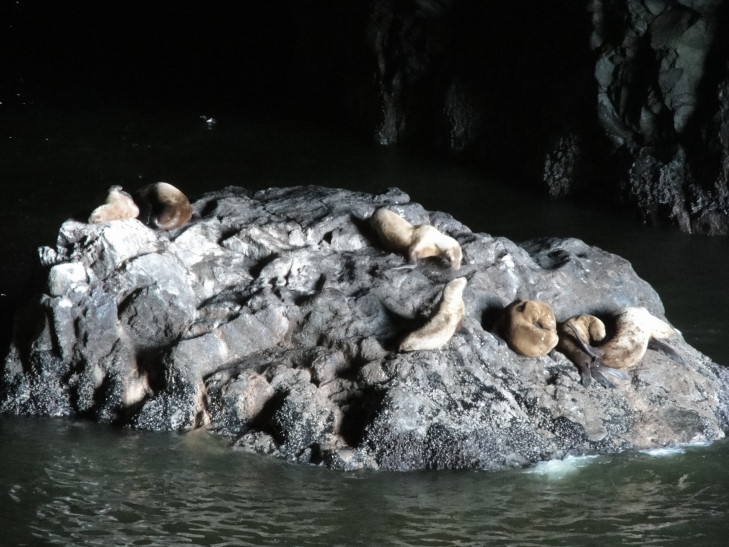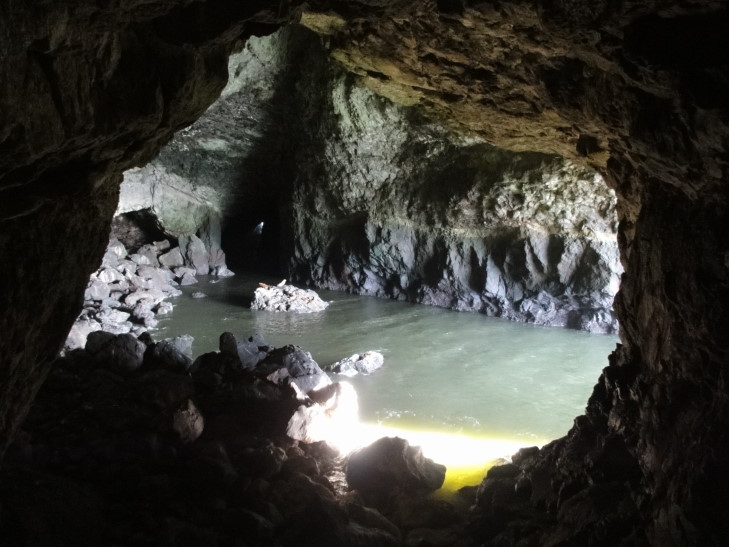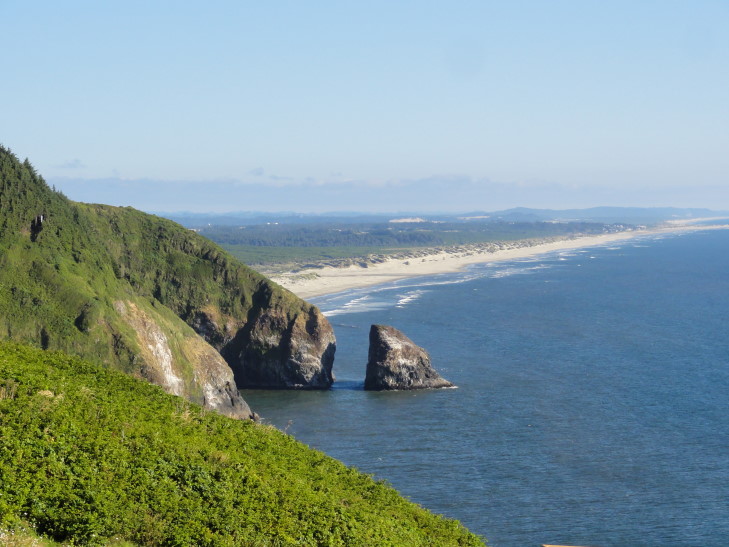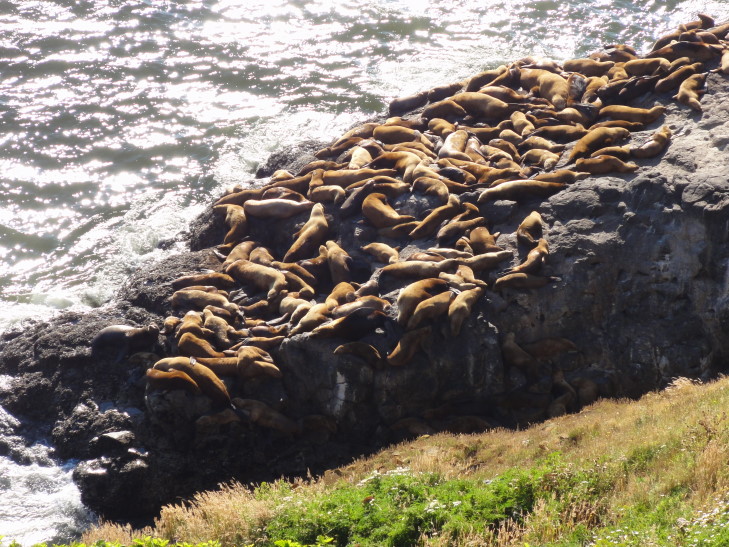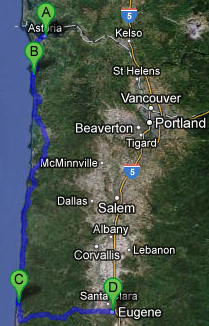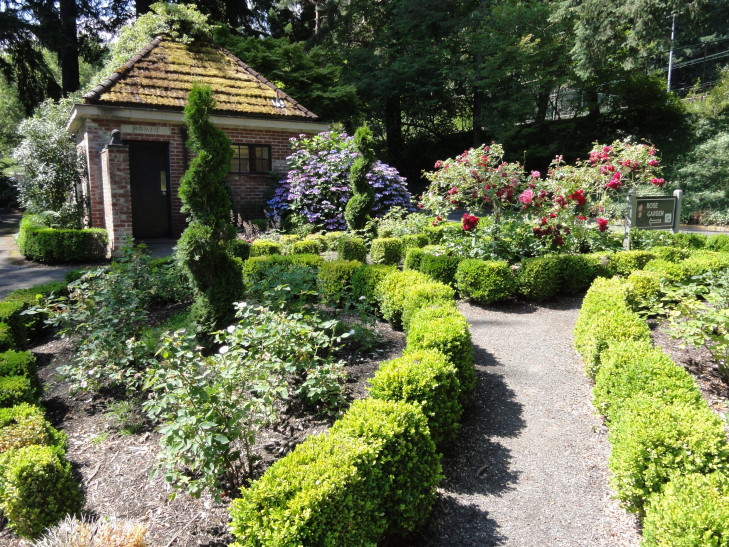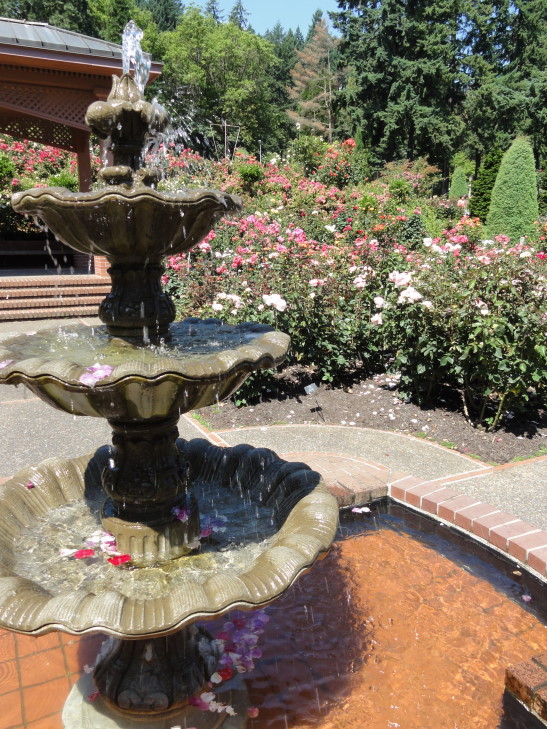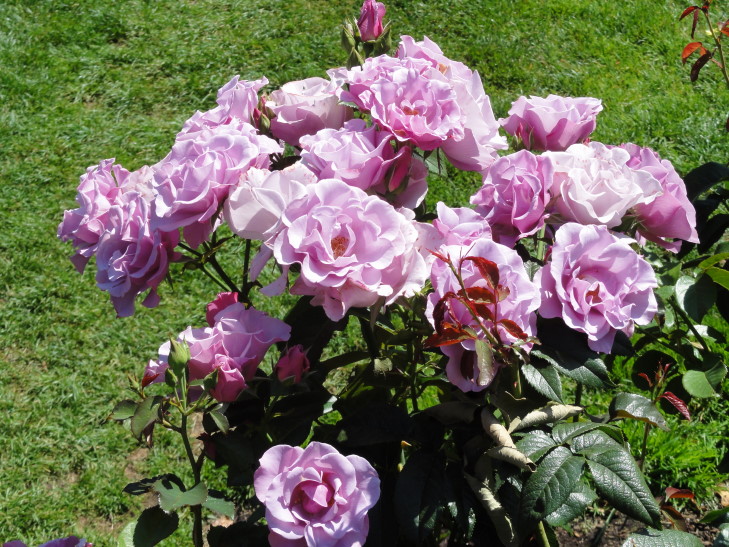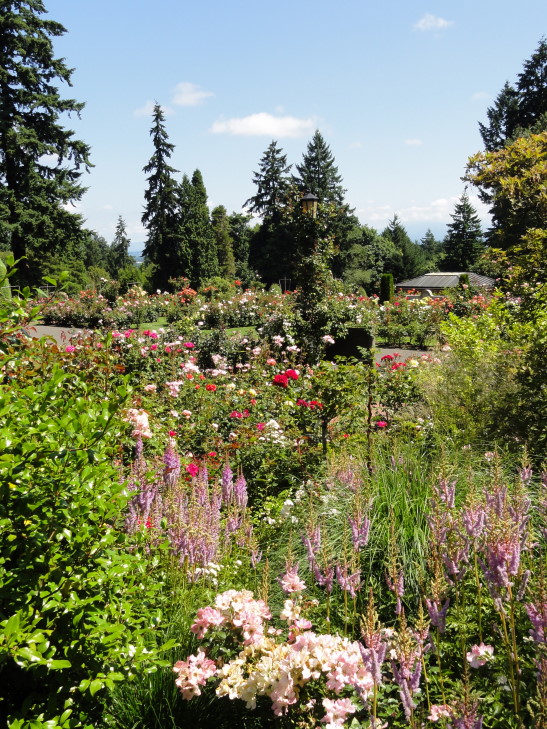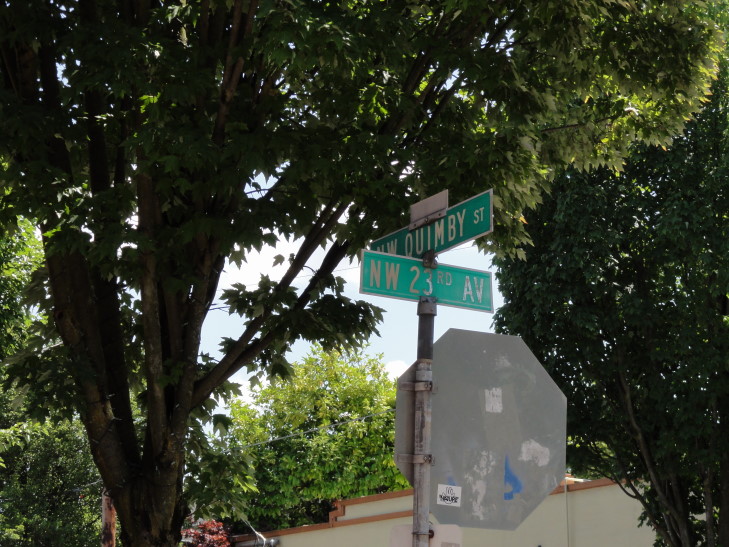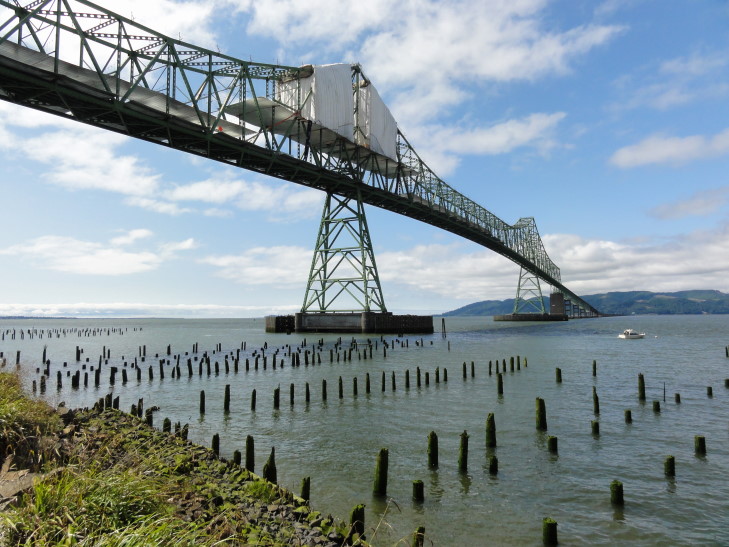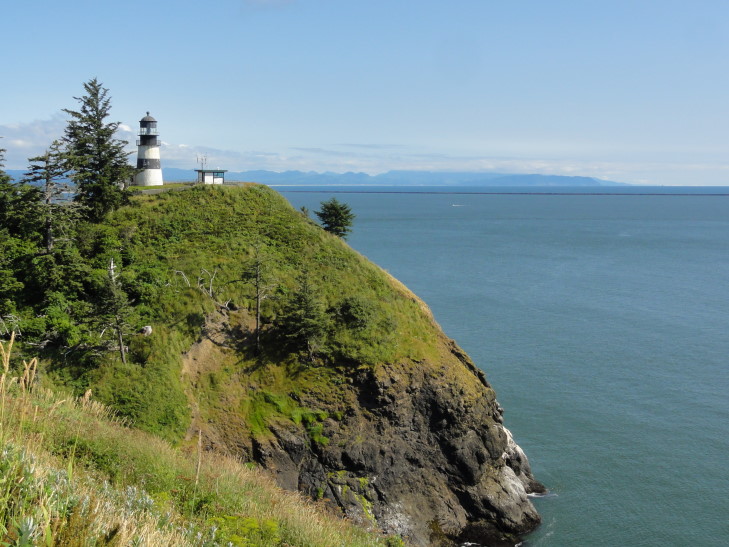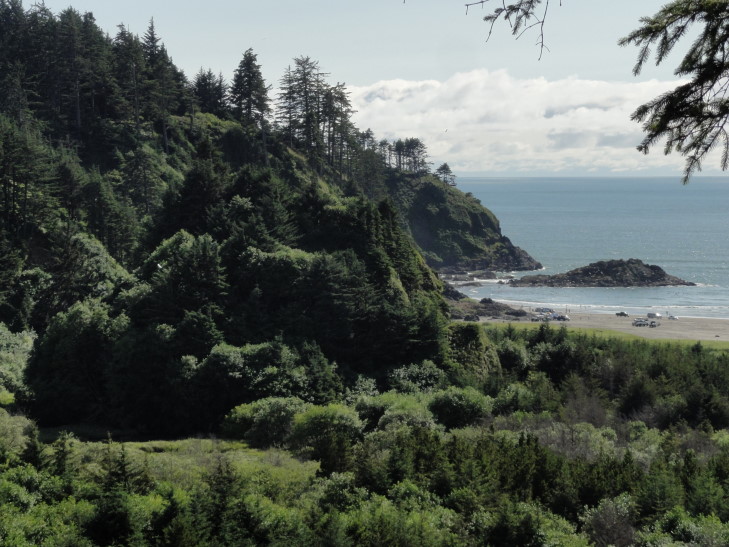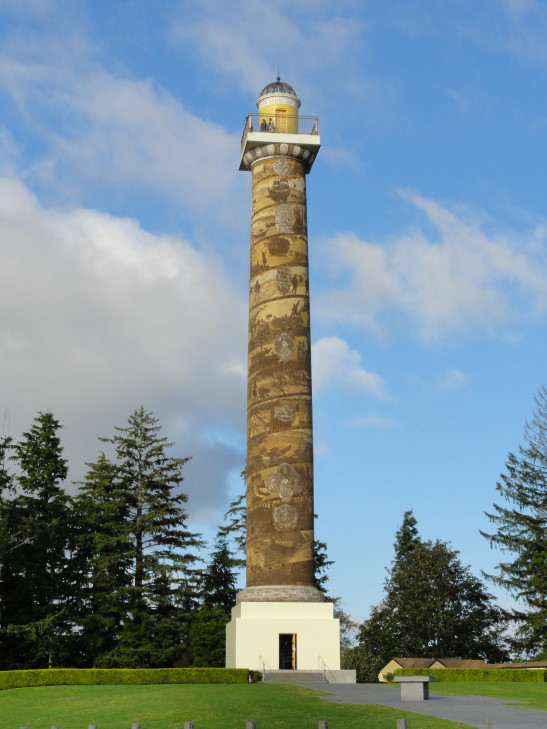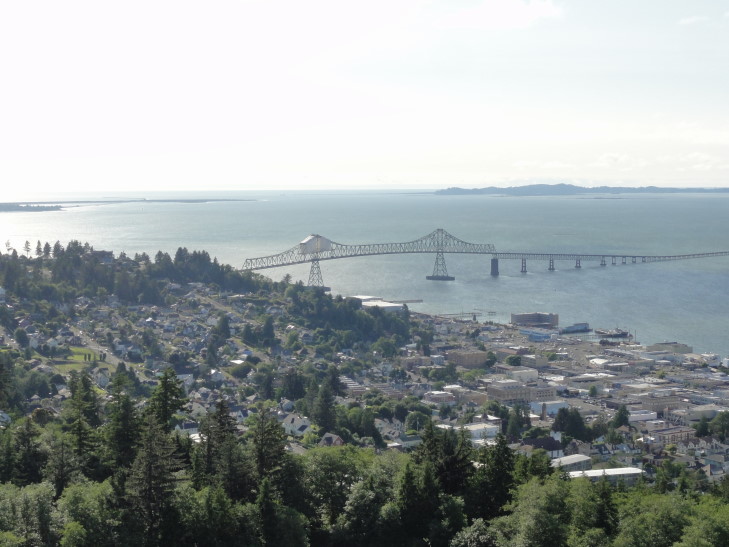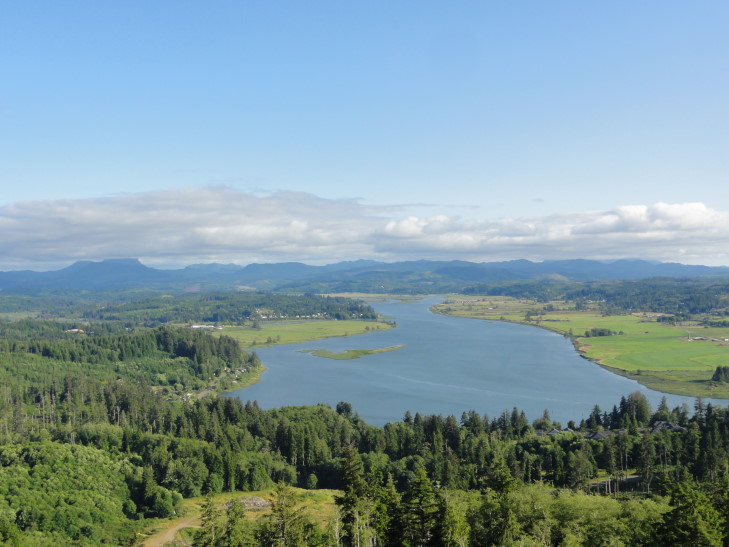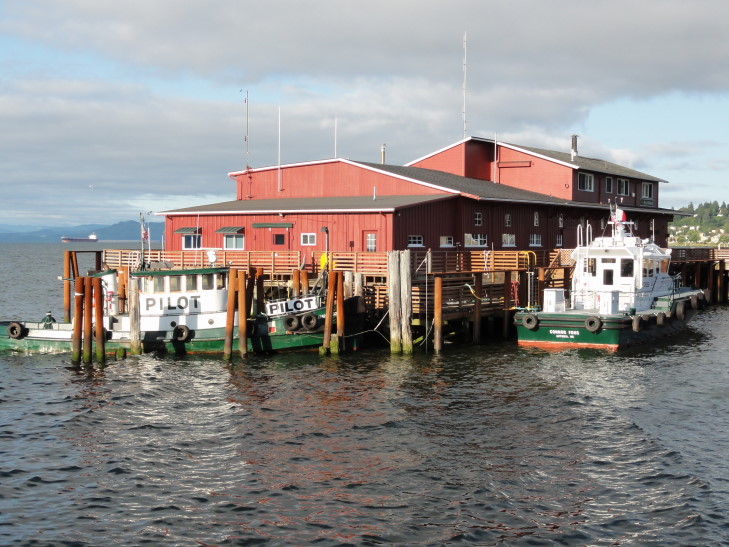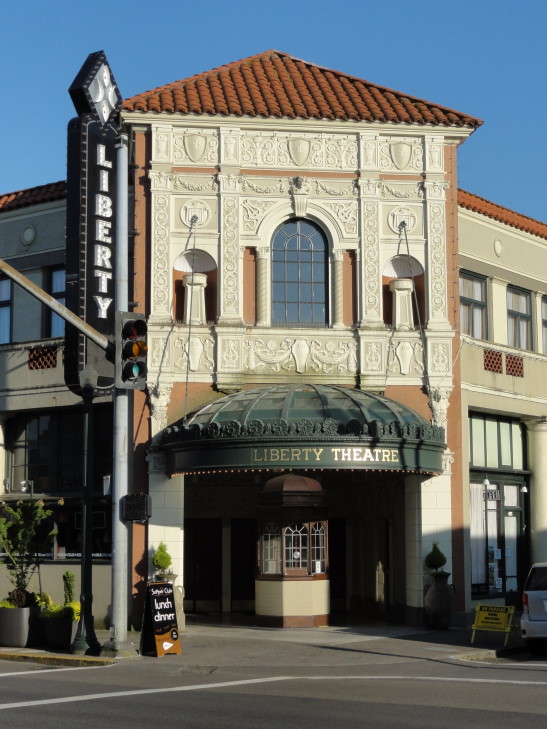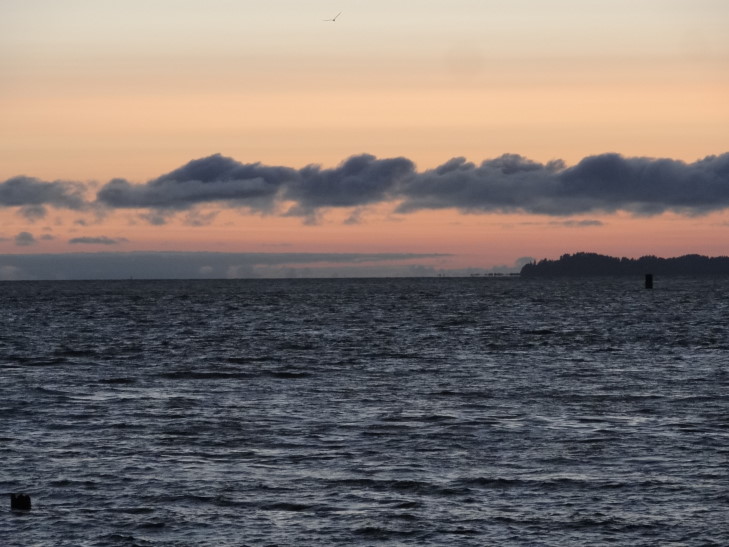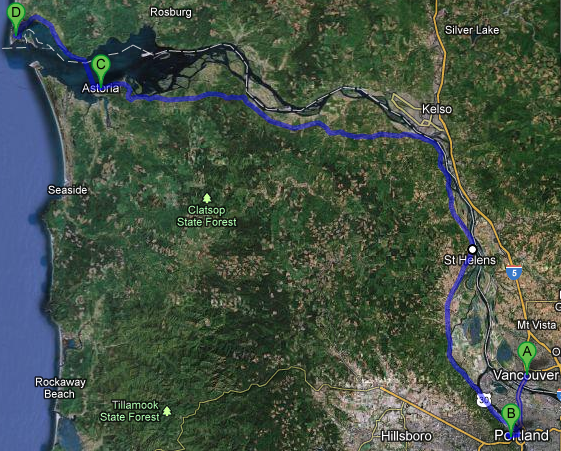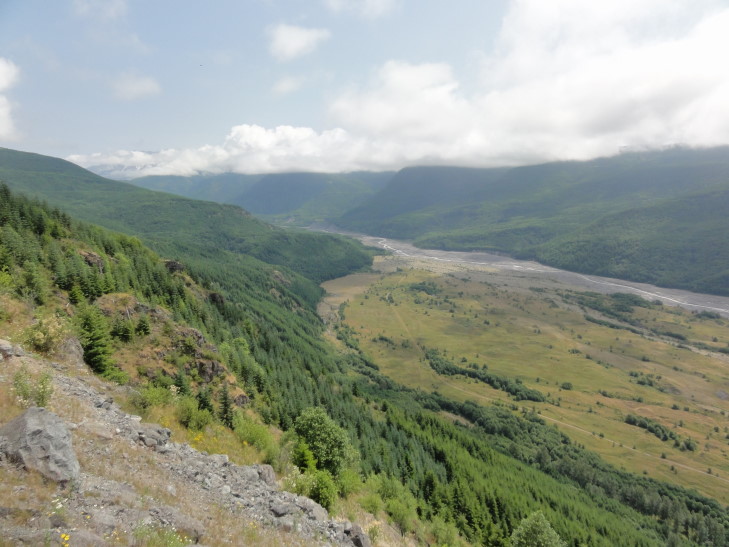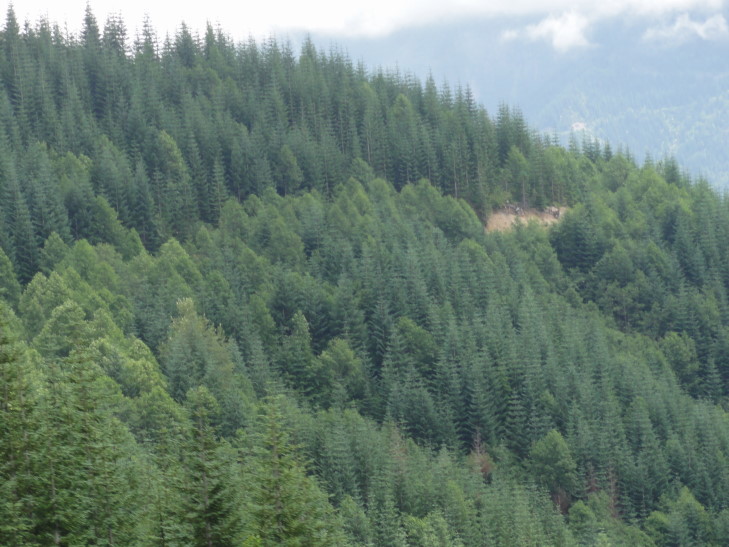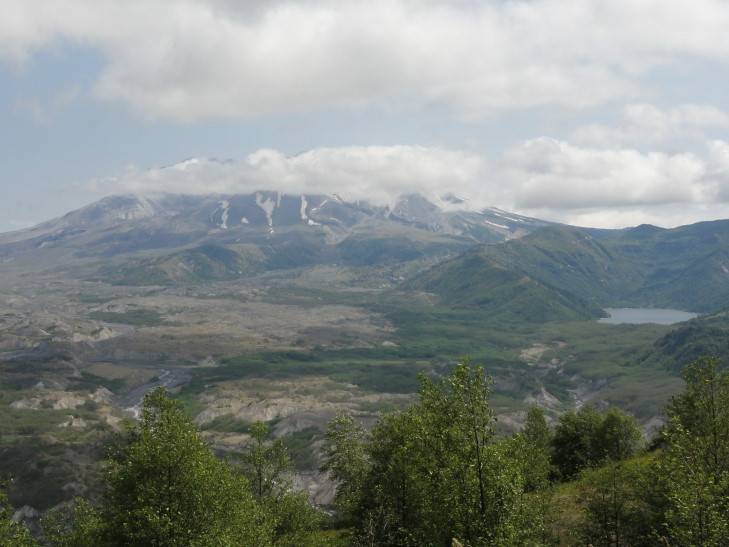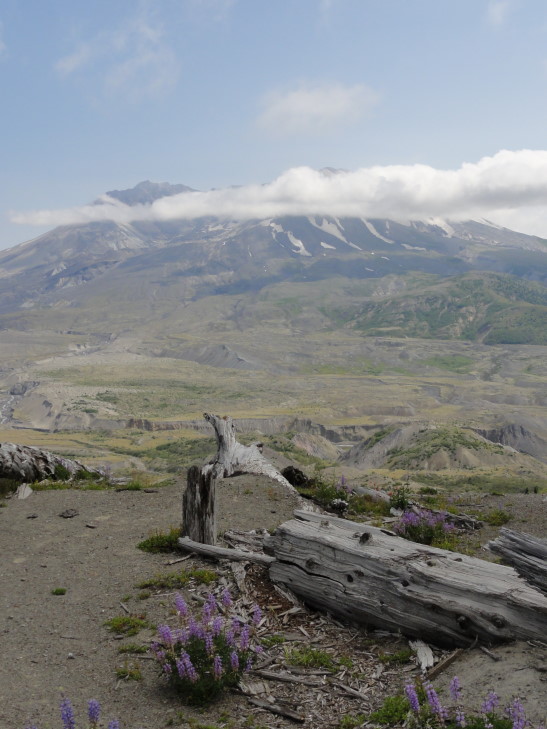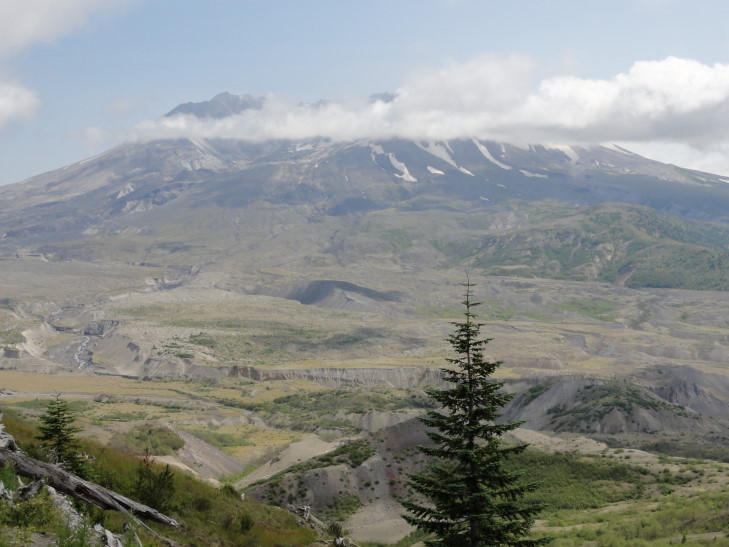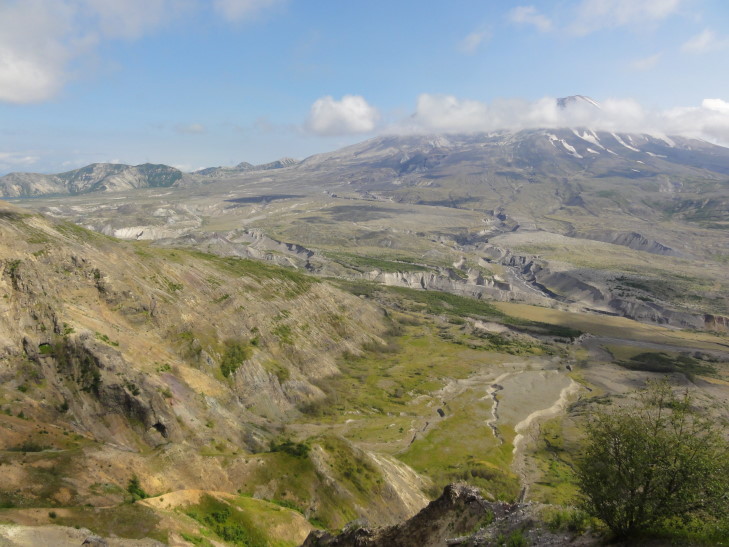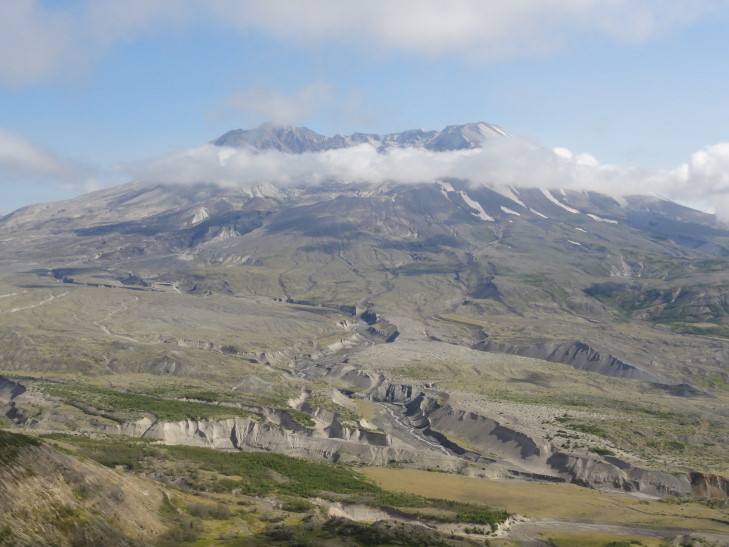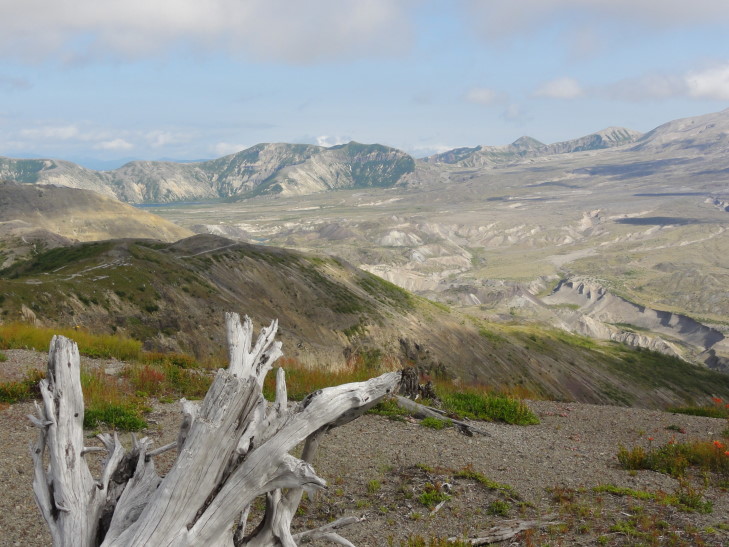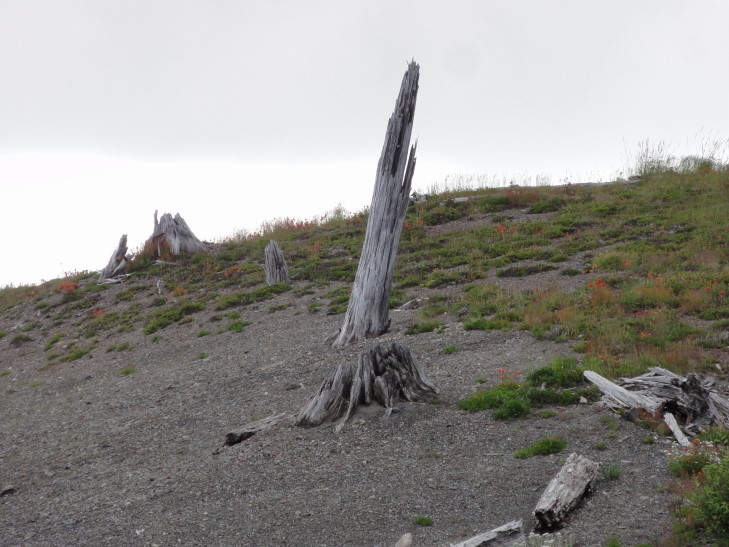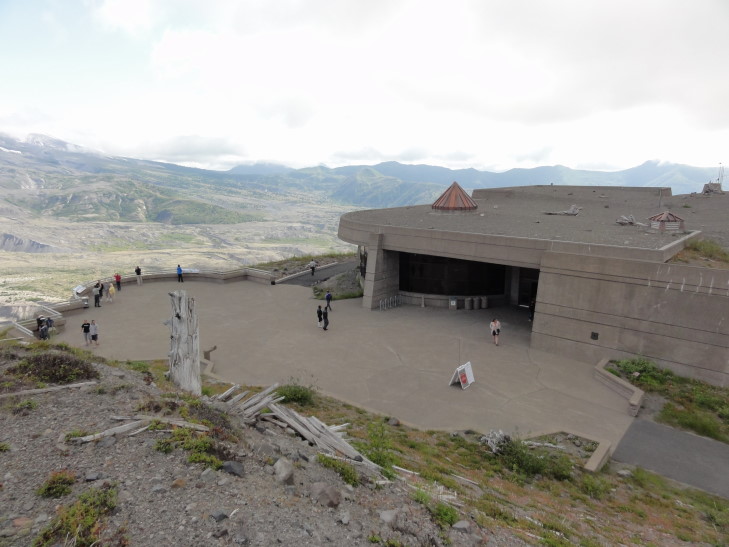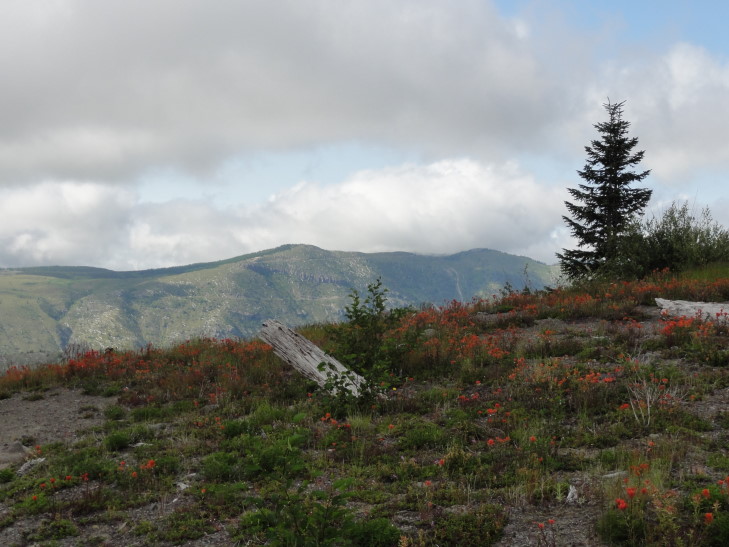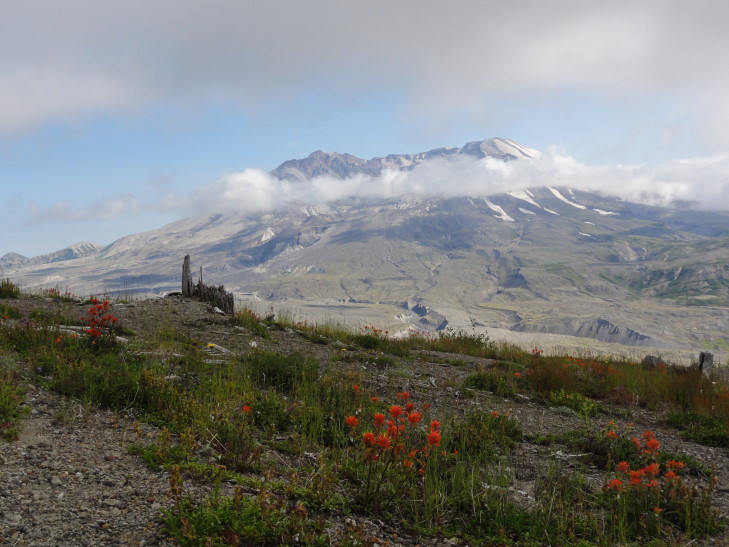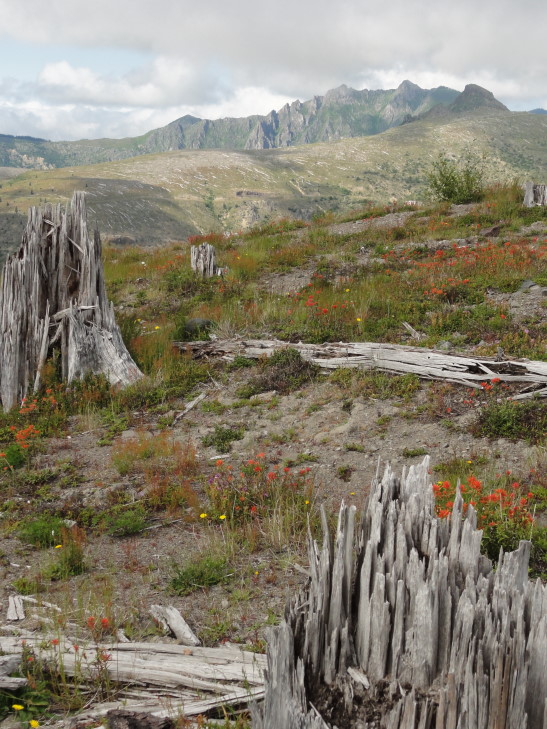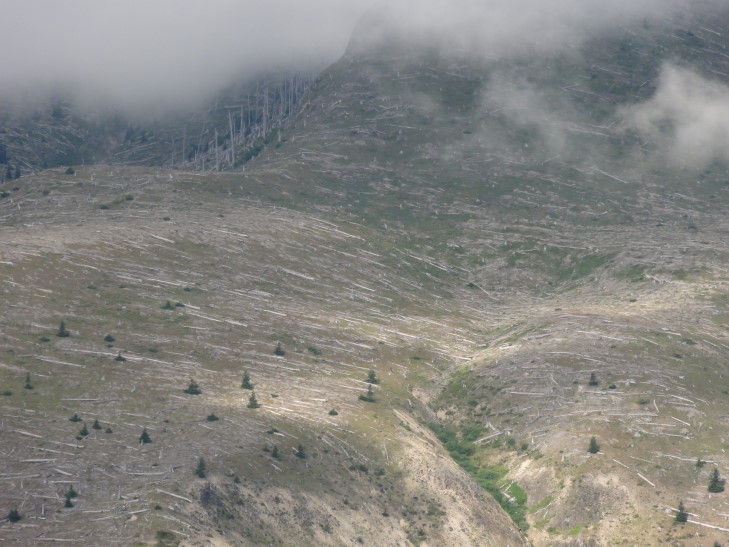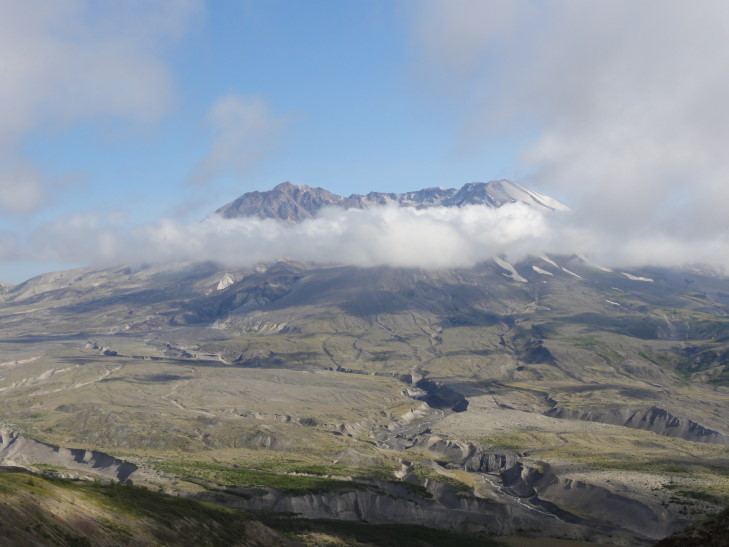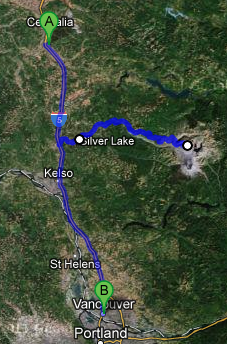We ate and left our hotel in Grants Pass fairly early, around 10 o’clock. We took route 199 southwest through extreme southwestern Oregon’s coastal mountains and crossed into California. We had to stop at a border crossing of sorts and declare that we weren’t bringing in any produce. Route 199 continued through the very hilly, heavily forested terrain and was at times very curvy. After some time we drove along a river and entered the first of four state or national parks that formed collectively the “Redwood National and State Parks” system.
As we approached the coast we started to see some of the redwoods along our route — massive tree trunks with long stretches of smooth bark in vertical ridges. Fog was also rolling in a bit and the temperature had plummeted from the mid-70s in Grants Pass to the upper-50s. We came out of the coastal mountains and arrived in Crescent City, California and switched over to route 101.
We didn’t see much in the way of restaurants (or, rather, ones that appealed to us) initally. We did pass a Torero’s though, but I’m guessing it was unrelated. Desperate for some chow I had us turn onto Front Street hoping to find something. Eventually we ended up on the coastal road. Wow, what a beautiful area — the sea just covered in rocks and sea stacks of various sizes.
Nothing found there either, we hopped back on route 101 and went a bit further where we found the Crescent City harbor and a handful of restaurants. We chose the “Fishermans Restaurant”. I really liked the tables as they had nautical charts glued onto their surfaces. I had breakfast for lunch (yumm french toast!) while the rest had more normal items, Michelle opting for some shrimp. It was decent. On the way to the restroom a newspaper clipping caught our eyes — apparently the harbor was extensively damaged and a person swept out to sea due to the tsunami after the Japan earthquake last March.
Headed south on route 101, before veering off on the scenic road through Prairie Creek Redwood State Park. What an amazing drive, among all of those huge trees. We stopped at Big Tree and saw a… big tree. Really big! At 304 feet, however, it was nowhere near the highest (the highest being the Hyperion Tree at 379 feet, somewhere in the area we were in but a closely guarded secret) but the nearly 22 foot diameter, 68 (!) foot circumference, and estimated 1,500 years age was very impressive. To think that somebody had intended to fell it in the early 1900s to use the stump as a dance floor!
In addition to checking out the big tree we also took a small circle trail that weaved its way through mossy trees, head-high ferns (yeah, head-high!), and of course more redwoods. There were mercifully few insects to be found, however, in stark contrast to the Hoh River temperate rainforest. One particularly amazing area was formed by several redwood trunks that had fallen and propped each other up to form almost a steep-angled roof. Addison jumped down off of a fair height and hurt his knee, hopefully it won’t be too sore in the coming days.
We then headed to the ranger information station to ask about hiking to Fern Canyon, something I had heard was spectacular. Unfortunately it was at the end of a 8-mile unpaved one and a half lane road (and I’m being generous here) so we decided to not do the hike. I was disappointed but it really was for the best.
Headed to another ranger information station, this one located on a beautiful beach with clumps of sea grass, piles of driftwood, and more rocks and sea stacks, as well as the fog clinging to the hillsides just above. The ranger told us that the Lady Bird Johnson grove of redwoods was worth checking out, the site of the 1968 dedication of the Redwood National Park. Picked up a magnet and on the way to the car Addison told me about a notice about “sneaker waves” posted in the office — apparently four people had died on that beach since 2004 due to sneaker waves, waves that were unusually large and washed ashore even in relatively calm conditions. They crashed far up the beach, knocking the victims down and dragging them out to sea where they died of hypothermia. Terrible.
Headed up a steep (15 percent grade) paved road for about two miles to reach the Lady Bird Johnson grove trail head. The trail was a loop of about one and a half miles that, like the prior trail, led through multiple stands of redwoods, high ferns, and mossy trees. There were numbered spots that corresponded to a trail guide but no trail guides were to be found — we had heard earlier at the rangers’ office that they had been out of print for several months. Oh well.
Addison was disappointed to learn that these woods weren’t Endor, but rather that the Endor scenes were filmed in Muir Woods just north of San Francisco. If it wasn’t Endor, however, it was darn close — we half expected to see Ewoks jump down from the trees and start prodding us with spears.
Piled back in the car and headed for our hotel in Fortuna, passing by some amazing beaches with rocks, tidal basins, and lagoons along the way, as well as the town of Eureka. Fortuna itself doesn’t seem to be much to write home about, however.
The hotel should more correctly be considered a motel (as the room doors open to the outside) and they don’t even have an elevator (we’re on the second floor, too, ugh). Oh well. Ended up eating at Eel River Brewery near the hotel. I had a pastrami reuben and steamed veggies that was OK, Michelle didn’t really like her beef chili though. Returned back to the room to blog while the family watched Olympics and played with their iPads and such.
